News Release
Wildfire season is upon us and coupled with the extreme drought that much of the United States is experiencing, we have a recipe for a disastrous 2022 wildfire season.
In fact, according to the CDC wildfires are starting earlier, spreading faster, and burning longer than ever experienced in recorded history. If that isn’t enough to keep us up at night, wildfires have also been linked to multiple health concerns including trauma and PTSD, cardiovascular ailments, respiratory illnesses, cancers, and poor sleep. Inadequate sleep, caused by the poor air quality that wildfires create, leaves us even less able to cope with the acute dangers of the wildfires and with managing life itself.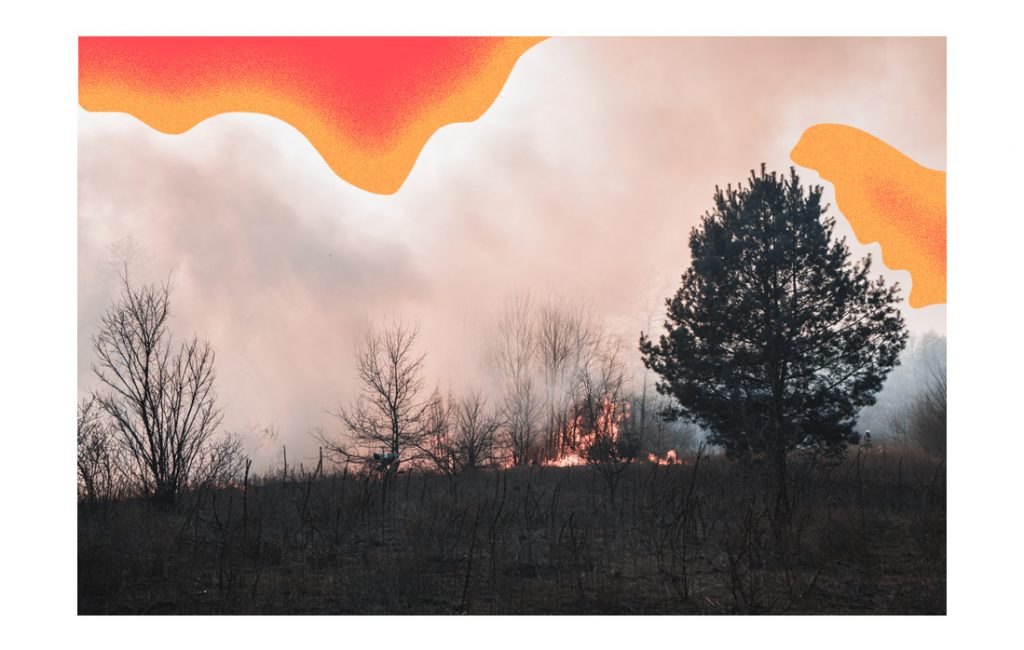

According to the CDC, insufficient sleep has been linked to type 2 diabetes, obesity, cardiovascular disease and depression. (1) A case study on the deadliest wildfires in California shows the negative impact that this type of climate change extreme has on mental health. It also illustrates that mental health outcomes, specifically PTSD, anxiety and depression are dependent on the extent of fire exposure to the individual, as well as pre-existing adversities (especially due to childhood exposures), and general quality of sleep. (2)
In a recent systematic review of multiple sleep studies, ranging over a 9-year period from 2012-2021, sleep disturbances are shown to be highly prevalent with wildfire survivors, and the proximity and the severity of traumatic exposure of the survivor creates an even stronger link. (3)
The case can surely be made that poor sleep and sleep disorders have overwhelming effects on human health. Apart from the errors in judgments when sleep is lacking, the less obvious ramifications are actually more frequent and include accidents, injuries, lower functioning and lessened quality of life, and diminished family well-being. (4)
Insomnia and nightmares rate as the most common sleep issues that affect between 63-72% and 33-46% of survivors respectively. (3) Meanwhile, behavioral changes in children after experiencing a wildfire can include changes in concentration, elevated irritability, sleep changes, and a decline in academic performance. (5)

“Some studies indicate that air pollution increases sleep disturbances by affecting the airways and the brain and the emotional impact caused by wildfires,” explains Dr. Carleara Weiss, a sleep science advisor at Aeroflow Sleep. “In addition, individuals with respiratory difficulties, such as those with obstructive sleep apnea, may have more difficulty sleeping with air pollution. In general, increasing air quality via filtration systems and air cleaners should contribute to better sleep,” Dr. Weiss says..
While we can all understand the environmental impact of wildfires, some of us have also experienced, first-hand, the devastating impact of wildfires physically, emotionally, and economically.
In my recent conversation with retired Federal Smoke Jumper for the US Department of Interior Bureau of Land Management, Todd Jinkins (disclosure: my older brother), I asked him if he ever experienced sleep disturbances as a direct consequence of the smoke pollution that he was exposed to while fighting wildfires.
He responded, “over the course of my twenty-three-year career, I often experienced sleep disturbance from wildfires for a myriad of reasons.” When I asked Jinkins if he was ever given any training on how to improve sleep while on the job, he responded emphatically, “no, nothing, no training or talk of anything like that.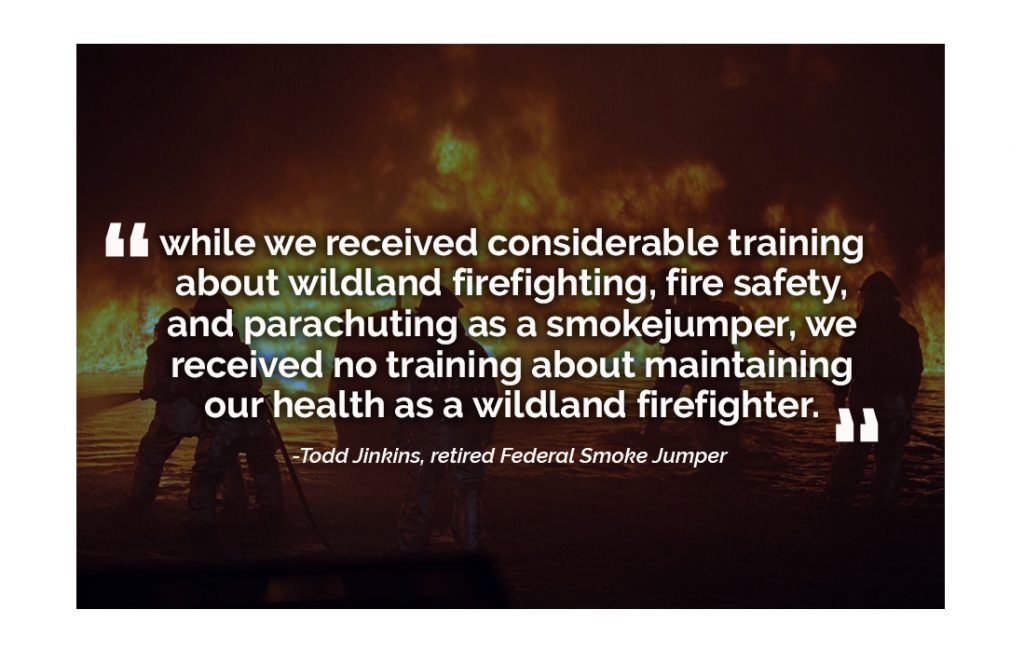

”Jinkins went on to describe that, “while we received considerable training about wildland firefighting, fire safety, and parachuting as a smokejumper, we received no training about maintaining our health as a wildland firefighter.” Elaborating, he said, “maintaining your physical health is critical for peak performance as a smokejumper, but mental health is also of critical importance. Recent recognition of high suicide rates among firefights and first responders is bringing this issue into focus.”
PTSD, insomnia and sleep disturbances can continue for a long period after living through a wildfire. Wildfires have been shown to correlate with increased rates of PTSD, depression and generalized anxiety (GAD) and these psychological issues can continue for years after the initial event.
A study on survivors of a wildfire in llia, Greece, concluded that the presence of insomnia was identified in 63% of the survivors, and the majority of them were older females, who had also developed PTSD. Over 50% of the participants also experienced what was described as “fear of imminent death.” (6
Recent Surge in Wildfires
The hot summer months are projected to be a very dangerous fire season and 2022 continues to be an exceptionally dry year. Typically, wildfire season lasts for a 4 to 5-month period from June to October, but the season has recently extended to a now more common 7 to 8-month period throughout much of the South and Western United States. Along with the intensifying and widening of the fire season in places like California, Idaho, Oregon, Arizona, Nevada, New Mexico, Colorado, Utah and Florida, we are also seeing more intense wildfires as climate change progresses.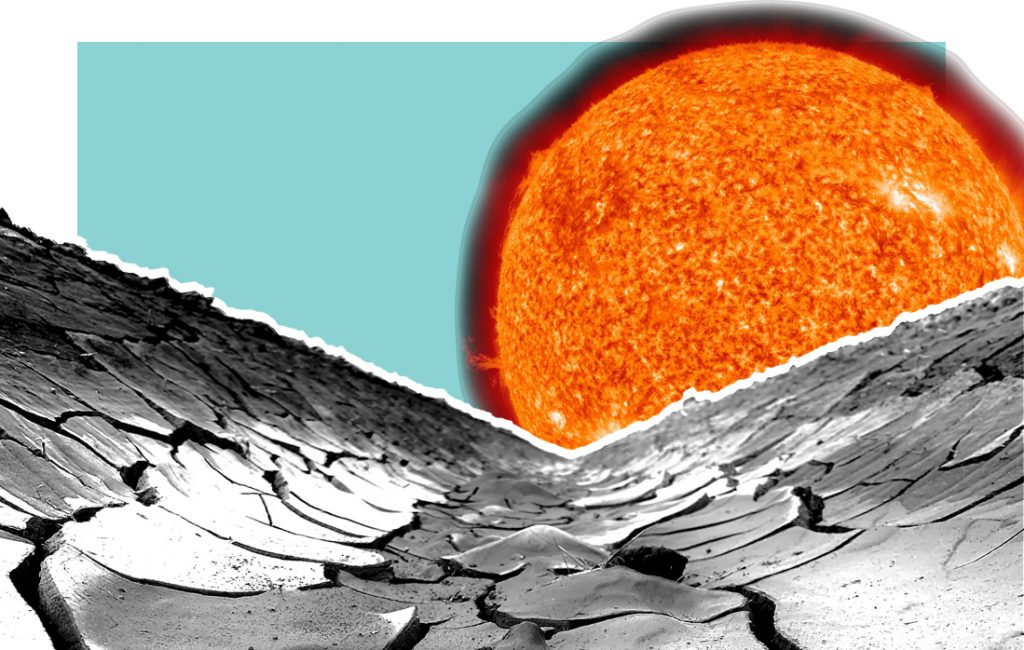

In fact, more than half of the 20 largest fires in California’s history took place in the last 5 years. (7) The average amount of acres burned annually by wildfires has been steadily increasing since the 1950’s. In the 1950s, experts recorded 3000 acres burning. The number today is more like 300,000 acres. Prior to 1970, there were no megafires (fires that burned more than 100,000 acres). (8)
The current extreme dry weather pattern is also intensifying across parts of the West in California, Nevada, Utah, New Mexico, Texas, Oklahoma and Colorado. (9) California has had the driest January-April on record and Nevada and Utah rank this same period the 3rd driest in a four-month period since records began. (10) As of May 17, 2022, more than half of the lower 50 States were experiencing drought.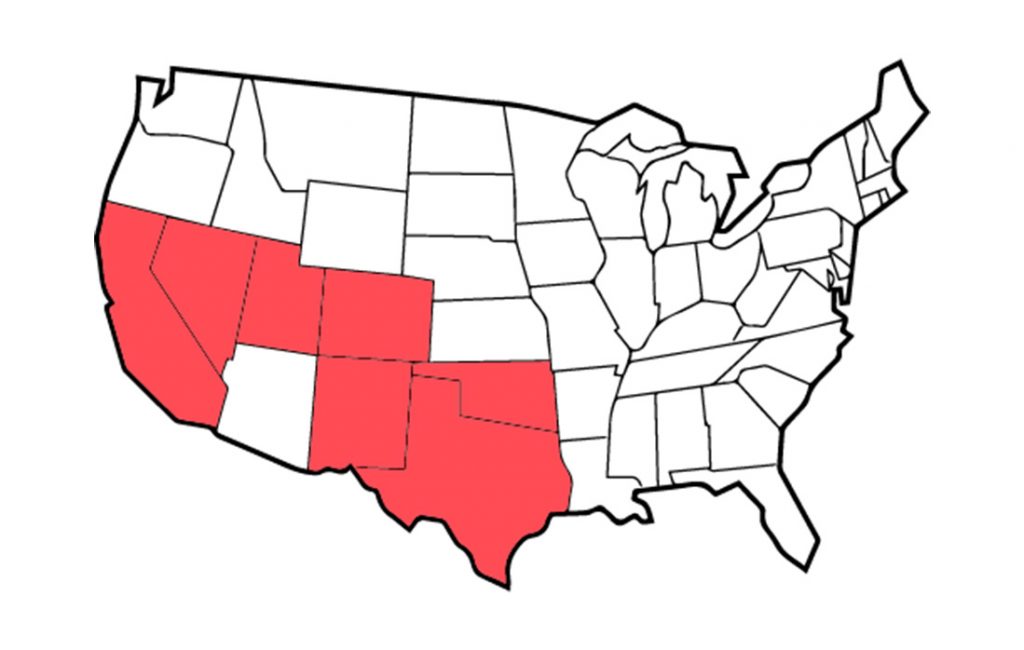

Rong Fu, UCLA professor of atmospheric and oceanic sciences, paints a grim picture of what is to be expected with wildfires in the coming years, saying, “I am afraid that the record fire seasons in recent years are only the beginning of what will come.” (11)
We saw more large-scale fires in some regions around the world in 2021 than we have ever seen according to Copernicus Atmosphere Monitoring Service (CAMS) Senior Scientist and wildfire expert, Mark Parrington. As a result, several regions also experienced their highest emissions ever, as specified by data tracked by the Global Fire Assimilation System (GFAS) data that goes back as far as 2003. (12)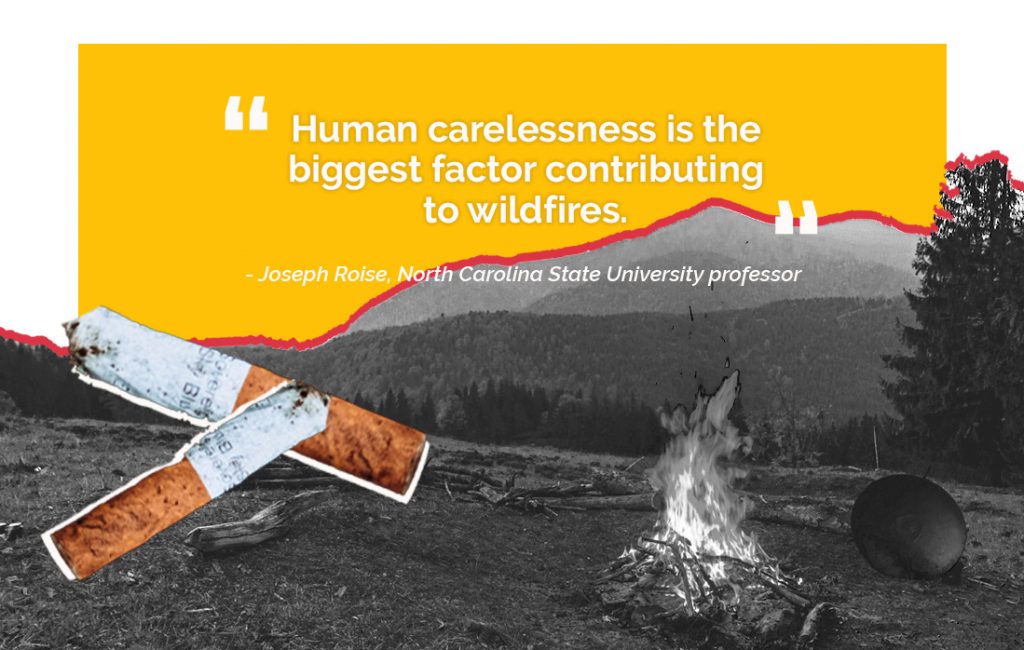

Extreme weather, including dangerous lightning storms, strong winds, and high temperatures are all the effects of climate change, and these events are creating an ideal situation for wildfires to start. Although sometimes wildfires occur naturally either by lightning strikes or by spontaneous combustion of dry fuel like sawdust and leaves and the sun’s heat.
North Carolina State University professor Joseph Roise points out that a majority of fires occur because of “human involvement,” such as by castoff cigarettes, arson or neglected campfires. Roise explains, “Human carelessness is the biggest factor contributing to wildfires.” (13)
Tips To Reduce Wildfire Pollution and Improve Sleep
1. Invest in a good quality air filter, and a cleaned and updated HVAC system
When we are talking about improving interior air quality (IAQ), we can filter the air through portable air filters or inside the central heating, ventilation and HVAC systems of a home. Many studies have found a beneficial impact on indoor air pollutants by using a high-efficiency particulate air (HEPA) filter that provides the highest efficiency in reducing pollutants during wildfires..
According to the US Department of Energy, a true HEPA filter should be able to remove 99.97% of airborne particles. Remember that clogged filters cannot do the job that they are intended to do, so be sure to check your filters and replace them more often during prolonged smoke events.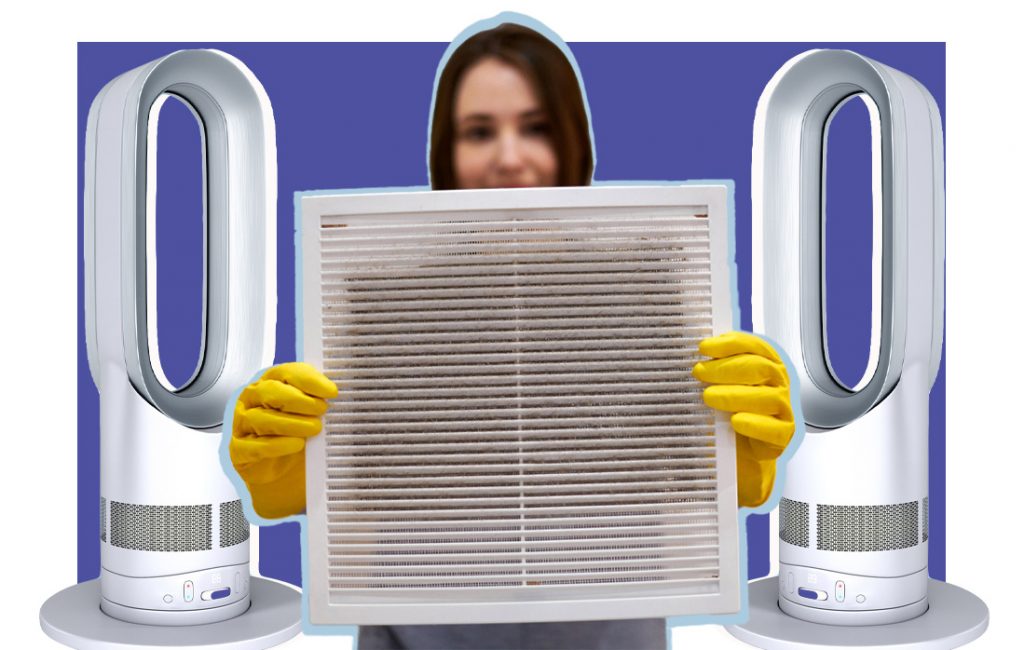

Air cleaners should filter at least two to three times the room volume per hour. Using an air purifier for just a few hours can be beneficial because it has been shown to reduce PM2.5 concentration in IAQ by 57%, which also produced a reduction in serum levels of inflammatory markers. And we know how beneficial lowering inflammatory markers is for many health markers, including cardiovascular health. (14)
2. Seal the windows and stay indoors, until air quality is safe
Dr. Weiss recommended staying indoors and closing windows, saying, “use an air cleaner and filtration system and keep the windows closed in your home to improve the air quality and stay indoors.” Once the air quality outside improves in the area, be sure to take the opportunity to air out your home, open the windows and doors, and use fans to help change the air inside the home.
3. Keep your home clean
Reduce chemicals, particulate matter (PM) and volatile organic compounds (VOC) in your home by cleaning your home often and using natural cleaning products when possible.
We know the IAQ is greatly improved when we reduce pollutants in our homes which are often hidden in common household items like beds, rugs, furniture, paint and in household cleaning products. These pollutants include particular matter (PM), (VOC) and chemicals. Prolonged exposure to these substances is associated with cardiovascular disease, respiratory diseases, lung cancer and COPD, (15) and short term exposure can have a negative impact on our sleep. (16)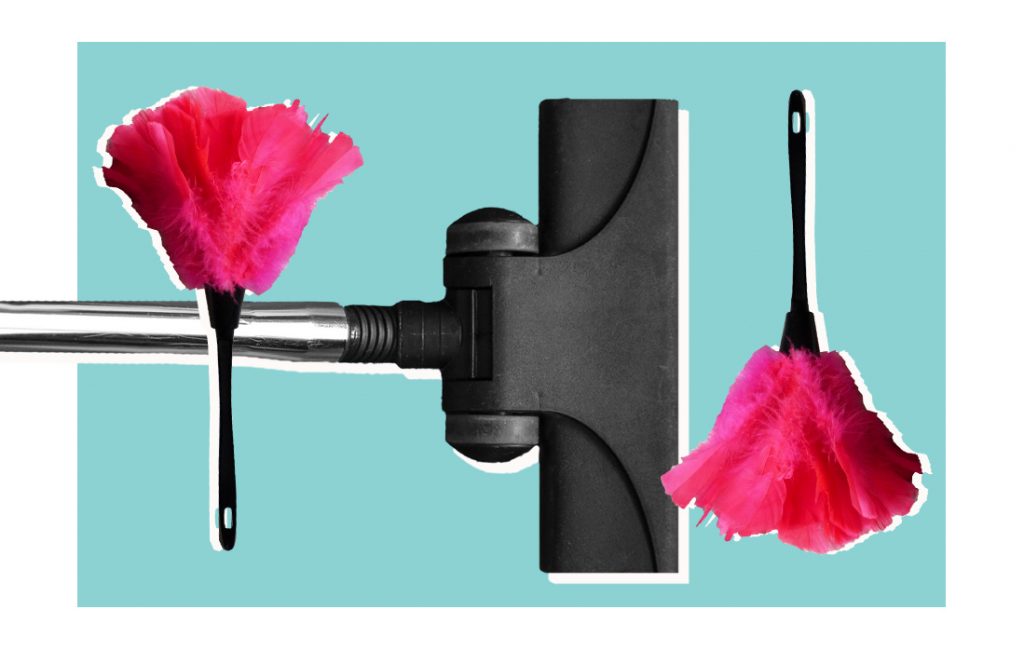

Consider using an organic mattress that is free from harmful allergens and chemicals, and use natural cleaning solutions which can both help to minimize the added chemicals in IAQ. Keeping dust to a minimum by cleaning the floors often with a damp cloth and by using a wet cloth instead of a feather duster can also help reduce the fine particular matter (PM2.5) from dispersing in the air.
4. Make your bedroom a “Clean Room”
If you can’t afford to buy multiple air filters for your entire home, focus on your bedroom for added sleep benefits.
Mary Prunicki, director of air pollution and health research at the Sean N. Parker Center for allergy and & asthma research at Stanford University, recommends creating a single room within a home that can be the “clean room.” (17) Also, be sure to place the air filters away from doors, windows and foot traffic, but don’t put them too close to walls or in the corners of a room where air less readily reaches the unit. (18)
5. Keep added pollution in your home low
Avoid using anything in your home that burns, such as your fireplace, gas logs, candles and incense.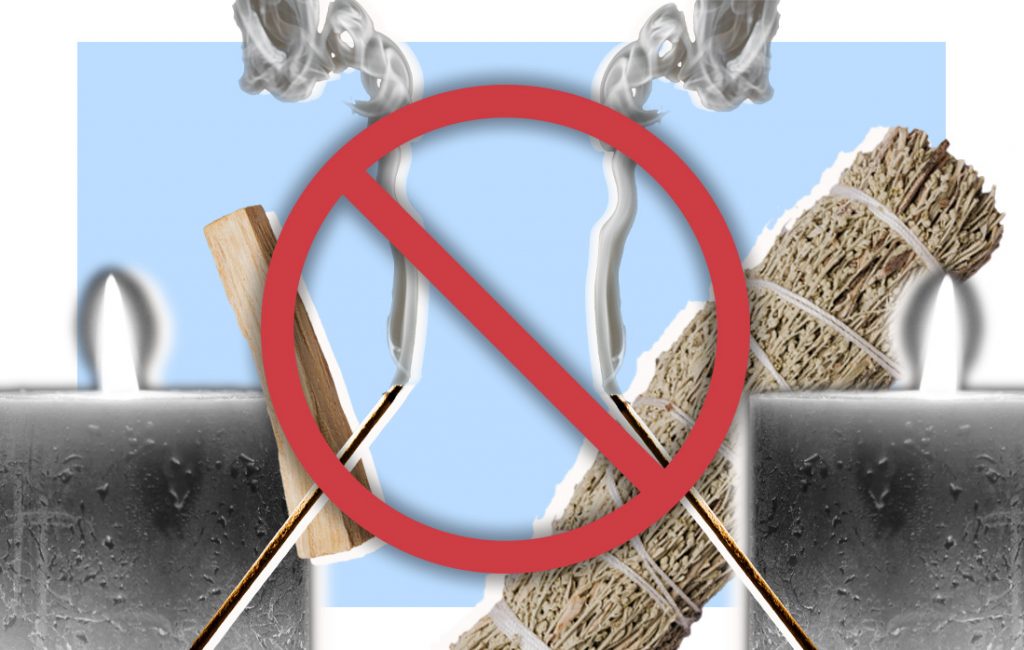

During a period when the air index quality is diminished, only use your vacuum if it has a HEPA filter because vacuuming can actually heighten the particulate matter load in your home, according to Linda Smith, Ph.D. Branch Chief of the California Air Resources Board, because vacuuming can stir up particles that are already in your home and disperse them in the air.
6. Don’t exercise
During episodes of dangerous air index quality, you may want to restrict your strenuous activity and your exercise routine. Most of us breathe through the mouth, not the nose, during exercise or demanding activity. Research shows that nose breathing can be more effective in preventing water-soluble gases, particles and vapors from reaching the lung (19), than mouth breathing. Breathing through the mouth has been shown to increase the dose of pollutants that reach our lower respiratory system.

An experimental study of healthy adults showed that the total respiratory tract deposition of ultrafine particles (diameter <100 nm) was about 5 times greater during moderate exercise than at rest. (20) So you shouldn’t feel guilty about not exercising during this stressful time and instead try some meditation, or simple breath work. You can do that seated with your mouth closed while you gently inhale and exhale through the nose and focus your mind’s attention on gentle breathing.
7. Seek medical attention when in doubt
Dr. Weiss says, “recognize warning signs from your body. Identify signs of intense or dangerous smoke levels, such as sinus congestion, burning eyes, coughing, chest pain, fatigue, and difficulty breathing. Those signs should prompt you to seek medical assistance.”
The Impact of Wildfires on Well-Being
Air quality:
Wildfire smoke is a mix of fine particles (PM2.5) and gases from the burning plants, trees, buildings and other materials.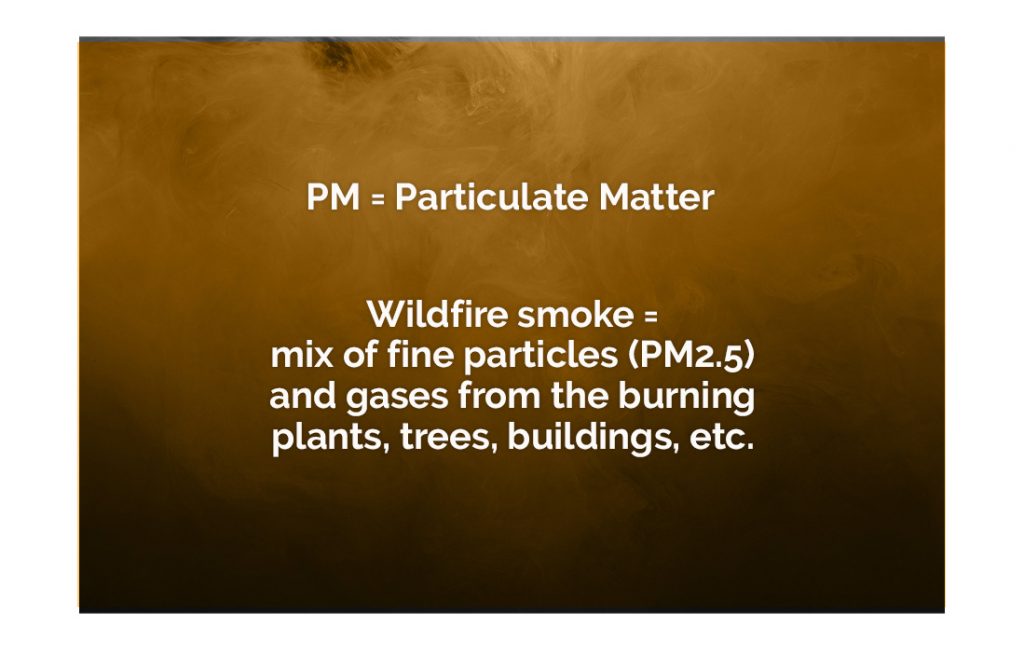

Particulate matter (PM) is one major component of air pollution and is a key term that is often used to describe wildfire smoke. PM consists of both liquid and solid matter that is suspended in the air and is measured by size rather than the chemicals it contains.
According to the EPA, PM2.5 or less pose the greatest threat to health because these fine particles can penetrate the human respiratory tract, enter the bloodstream and impair vital organs. These particles travel into the deeper surface of the lungs while PM10 tends to be larger and coarser particles and are more likely to deposit on the surface of the upper lung area. Both PM2.5 and PM 10 can be inhaled, and both of the deposit sites can induce tissue damage and lung inflammation.

The CDC maintains that wildfire smoke can make anyone sick, but people with asthma, COPD, emphysema, heart disease, and children, pregnant women and responders are especially at risk for the ill effect of wildfires which include:
- Trouble breathing
- Asthma attacks
- Tiredness
- Headaches
- Chest pain
- Increased heart rate
- Runny nose
- Wheezing
- Coughing
- Stinging eyes
- Scratchy throat
All of these issues can also affect one’s sleep. Along with the multiple studies that show PM2.5-10 can have a harmful effect on anyone’s sleep, one study looked specifically at how children’s sleep was affected when they were exposed to PM10 or below, and it showed that there were negative effects that included increased sweating while sleeping and trouble initiating or maintaining sleep. (21)
A randomized controlled study on sleep and bedroom air quality shows that when the air quality was improved, with lower CO2 levels, subjects were found to have improved performance on logical thinking the next day and they reported improved sleep quality, less grogginess, greater ability to concentrate, and overall felt better. (22)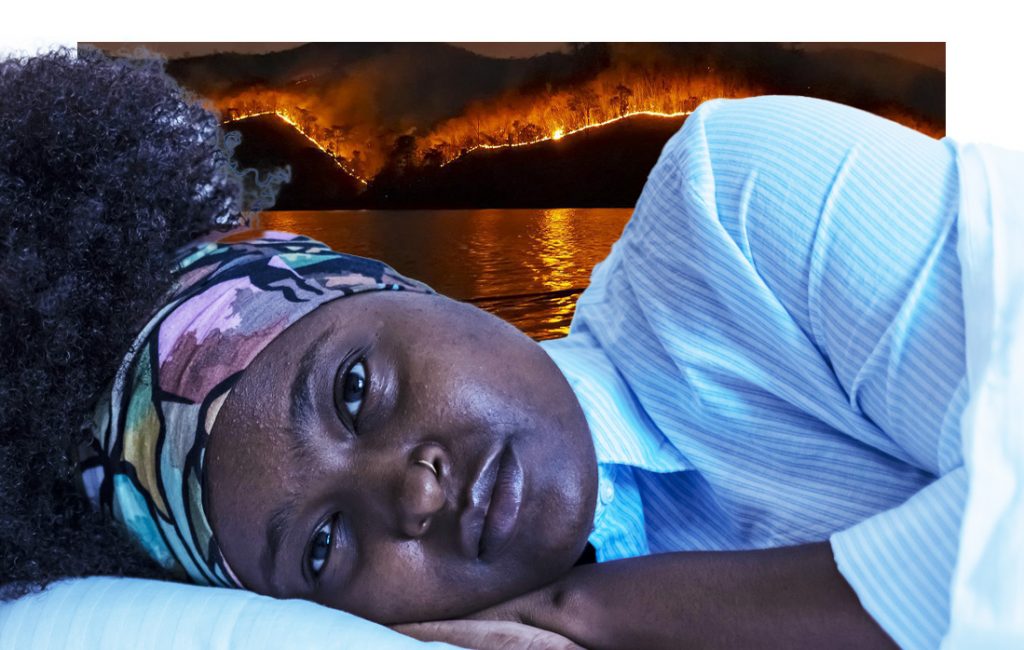

Smokejumper Jinkins also cautioned, “most of these causal factors could be experienced by anyone who is in close proximity to a wildfire, but increasingly frequent large wildfire smoke dispersal can affect individuals hundreds or even thousands of miles away from an uncontrolled wildfire.”
When asked about the bill that The House of Representatives recently passed called the Federal Firefighters Fairness Act that creates the presumption that federal firefighters who become disabled with specific diseases (such as heart disease, lung disease, certain cancers, and other infectious diseases) contracted the illness on the job, and will be covered under workers’ compensation and disability retirement if this legislation becomes law, Jinkins said, “although this bill has only been passed by the House, it is encouraging that Congress has recognized the hazards that wildland firefighters face on a daily basis. I am hopeful that this bill becomes law soon to provide critical necessary health treatment.t.”
Stress:
Along with physical responses to wildfires, we also have common mental responses to the extreme stress that exposure to wildfires creates that include sleep problems, nightmares, anger, lack of concentration, general anxiety, PTSD and grief, to name just a few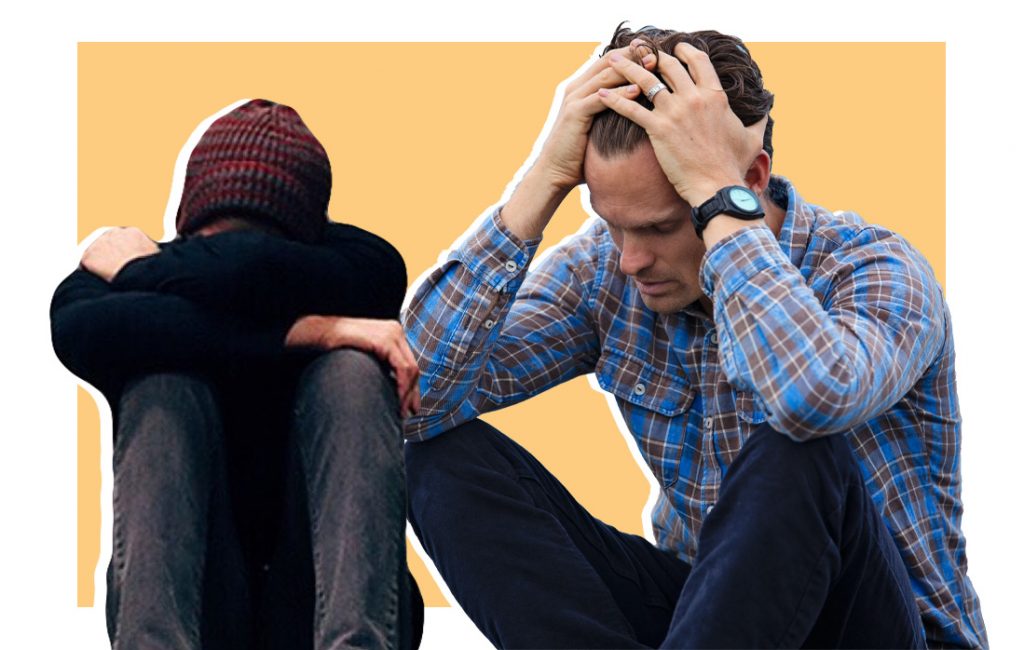

In a recent study of general anxiety disorder (GAD), six months after the Fort McMurray Wildfire in Alberta, Canada, findings show a prevalence between GAD symptoms after a natural disaster like wildfires. These risk factors increased in folks who had experienced any of the following: witnessing the burning of homes during a wildfire, pre-existing anxiety disorder, relocation, and exposure to media coverage of wildfires..
This study also shows that increased problematic substance abuse was associated with elevated GAD symptoms. (23)
Lifestyle Tips for Protecting Against Wildfire Pollution
1. Be like a river: stay hydrated
Drink plenty of water. Water helps the body process and clear harmful chemicals and gunk in our bloodstream and digestive track. It’s helpful to think of our body as a river. Ideally, we want the water to be clear and to move along quickly. If our body’s elimination systems slow down, our river can become a stagnant pond. Our goal is to keep the river moving smoothly so that the water doesn’t stagnate and collect stuff that shouldn’t be there. Staying hydrated is the single most important way to achieve this so that our internal river doesn’t dry up or become stagnant and get clogged up with garbage.
2. Get adequate sleep
Make sleep a top priority in your life as a way to keep your immune system strong and inflammation markers low. (24) Be sure you have a bedroom that is conducive to sleep with good air quality, a bed with a chemical-free and comfortable mattress, a cool environment (67 degrees Fahrenheit or below) and blackout blinds that keep light out so that your circadian rhythms can stay in sync with the sun
3. Do meditation and breathing exercises regularly
Resiliency has been shown to improve the effects on mental health after experiencing the stress of a wildfire. (2) We know that both mindful meditation and intentional breathing techniques can improve resiliency and increase vagal tone.
Breathing methods like the 4,7,8 method, and resonance breathing, have been shown to help reduce anxiety both over the long term and in more acute stressful situations. (25) Both of these breathing techniques have been studied for their ability to help quell stress and anxiety, and to help us fall asleep or stay asleep.
Full abdominal breathing stimulates full oxygen exchange, which means the productive exchange of outgoing carbon dioxide with incoming oxygen. This action controls the breathing rate and can slow the heart rate and help stabilize blood pressure.

It has also been shown that people who suffer from insomnia may have autonomic dysfunction and practicing slow, paced breathing techniques can help enable vagal activity which improves sleep quality. (26)
4. Exercise to improve HRV
When the AQI is good in your area, grab your running shoes and go for a walk, jog or hike to help improve heart rate variability (HRV). HRV is the amount of time between heartbeats and is associated with overall health. As a rule, when we are relaxed and resting the heartbeat is slower and when we are active, stressed or in danger, the heart rate increases. Our breathing correlates to this by increased inhalation signaling action or stress and exhalation signaling rest and repair.
Studies show that the positive influence that exercise has on HRV happens through increased vagal tone and downregulating of the sympathetic nervous system response. This improved HRV corresponds with decreased health problems such as heart conditions, and mental health issues such as depression and anxiety.

A study with residents of a nursing home in Mexico City showed that exposure to increased concentration on PM2.5 was associated with autonomic nervous system (ANS) dysfunction in elderly. There was a significant decrease in HRV for every 10ug/m3 increase in same day PM2.5 exposure, and participants who already suffered hypertension were more susceptible to the reduction in HRV induced by the PM2.5. (27)
5. Eat the rainbow
Using food as medicine is always a good option for health since eating is something that we do daily, and food has the ability to affect change in our bodies and minds. Vitamins B (28), C, E (29), D and Omega 3 polyunsaturated fatty acid (PUFA) (30), have all been shown to be protective against damage caused by PM; specifically pulmonary illness and cardiovascular diseases. (31)
Also, an important fact to note is that vitamin D does not naturally appear in optimal amounts in many foods (apart from in eggs, salmon or other fatty fish, and cod liver oil). There are, however, a few foods that have been fortified with vitamin D such as milk, yogurt and cereal. Getting enough sun (our body can itself produce Vitamin D from sunlight) on a daily basis is often the most reliable way to ensure that you are getting the appropriate amount of vitamin D daily.

Remember, however, that the fairer-skinned people and those under 50 are better at converting sunshine into vitamin D. Also, if you happen to live in the more northern parts of the world, where the sun’s rays are not strong enough in winter, you’ll want to be sure to supplement your food with vitamin D3, and eat foods like salmon—which has 66% of the daily value for vitamin D, or alternatively consume milk that is fortified with vitamin D.
We know that many fruits and cruciferous vegetables contain high levels of vitamin C, but leafy greens are also a great choice for getting adequate amounts of vitamins C and E, and they are also rich in some B vitamins. So eat plenty of salad, or sauté some bokchoy with garlic and lemon for a dinner.
We can ensure our vitamin E intake is optimal by eating a handful of nuts or seeds daily. Meanwhile cold water, fatty fish and seeds like flax, chia seeds and walnuts all contain good amounts omega 3.
6. Use the Firewise community’s principles of Ready, Set, Go
The Firewise USA program is a national movement that advises homeowners on how to prepare their homes to survive the effects of wildfires. It is part of California’s effort to ensure communities are prepared against wildfire. Ready, Set, Go is the three-step plan that Firewise recommends for all at-risk property owners and residents to follow in order to be ready for wildfires.
- Be Ready: Create and maintain defensible space and harden your home against flying embers.
- Get Set: Prepare your family and home ahead of time for the possibility of having to evacuate. Ensure that you have a plan of what to take and where to go
- GO!: When wildfire strikes, go early for your safety. Take the evacuation steps necessary to give your family and home the best chance of surviving a wildfire.

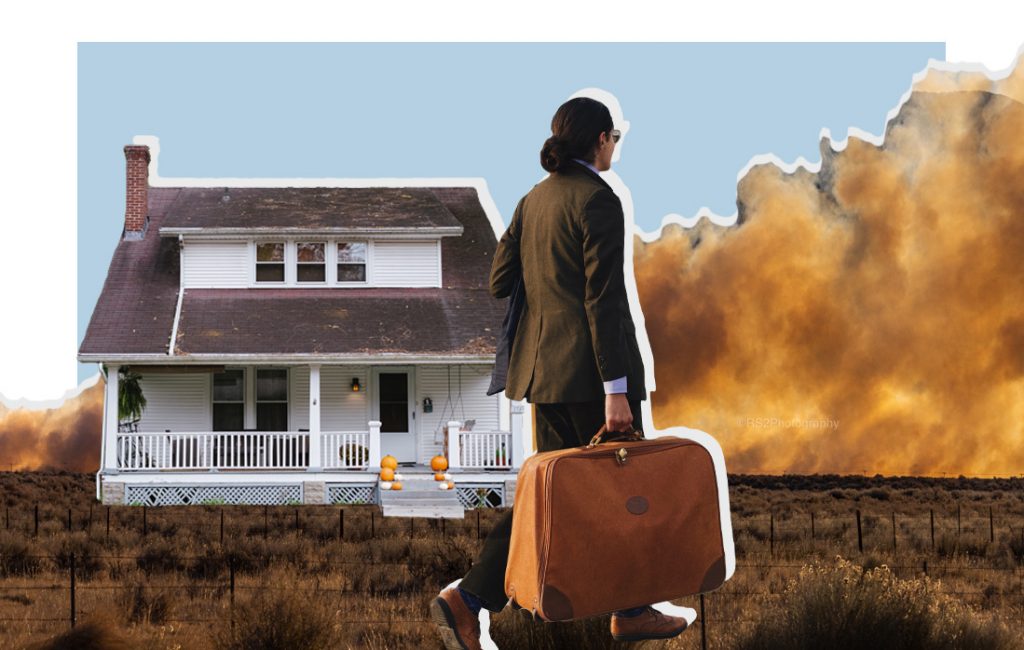
Jinkins recommended the Firewise principles, saying, “it is critical that homeowners abide by these principles. Over the course of my career I often witnessed situations where residents waited too
long to evacuate or refused to evacuate. This puts firefighters and residents in hazardous situations as late fleeing residents often clog access routes for fire responders. Residents who refuse to evacuate can find themselves in situations that quickly overwhelm them, requiring firefighters to endanger themselves in attempting to rescue these people.”Jinkins’ final words on wildfire preparation were, “don’t put yourself or firefighters at risk by trying to “ride out” an approaching wildfire.”
State-Wide Resources
California
Colorado
Florida
Idaho
Nevada
New Mexico
Oklahoma
Oregon
Texas
Utah
North East
Other Resources
- airnow.gov
- readyforwildfire.org/prepare-for-wildfire/firewise-communities
- nifc.gov
- cdc.gov/disasters/illness-injury.html
- cdc.gov/disasters/covid-19/wildfire_smoke_covid-19.html
- cdc.gov/disasters/wildfires/index.html
Last Word From Sleepopolis
Just a reminder that we are not medical experts. Anyone who is experiencing profound sleep problems associated with poor air quality from wildfires (or for any other reason) should seek medical advice.
Sleep is an essential ingredient of a healthful lifestyle and is the third pillar of health (32). When the quality of sleep is impaired, there are a multitude of health consequences that often follow. Be proactive when considering how to set up your home for wildfire season and stay informed as to what your local air quality index is so that you can stay prepared and safe during wildfire season.
References
Just a reminder that we are not medical experts. Anyone who is experiencing profound sleep problems associated with poor air quality from wildfires (or for any other reason) should seek medical advice.
Sleep is an essential ingredient of a healthful lifestyle and is the third pillar of health (32). When the quality of sleep is impaired, there are a multitude of health consequences that often follow. Be proactive when considering how to set up your home for wildfire season and stay informed as to what your local air quality index is so that you can stay prepared and safe during wildfire season.
References
- Sleep and Sleep Disorders. CDC, USA Center for Disease Control, https://www.cdc.gov/sleep/about_sleep/chronic_disease.html
- Silveira, Sarita et al. “Chronic Mental Health Sequelae of Climate Change Extremes: A Case Study of the Deadliest Californian Wildfire.” International journal of environmental research and public health. Feb. 2021.
- Ravinder Jerath et al. Self-Regulation of Breathing as a Primary Treatment for Anxiety. Applied Psychophysiology and Biofeedback. June 2015.
- Institute of Medicine (US) Committee on Sleep Medicine and Research; Colten HR, Altevogt BM, editors. Sleep Disorders and Sleep Deprivation: An Unmet Public Health Problem. National Academies Press (US). 2006. 3, Extent and Health Consequences of Chronic Sleep Loss and Sleep Disorders. https://www.ncbi.nlm.nih.gov/books/NBK19961/
- To, Patricia et al. “The Impact of Wildfires on Mental Health: A Scoping Review.” Behavioral sciences (Basel, Switzerland). Sep. 21, 2021.
- Psarros, Constantin, et al. Insomnia and PTSD one month after wildfires: Evidence for an independent role of the “fear of imminent death”. International Journal of Psychiatry in Clinical Practice. 2017.
- NASA Earth Observatory (September, 2021). What’s Behind California’s Surge of Large Fires. https://earthobservatory.nasa.gov/images/148908/whats-behind-californias-surge-of-large-fires
- Kasha Patel, Nasa Earth Observatory (December, 2018). Six trends to know about the season in the Western U.S. https://climate.nasa.gov/ask-nasa-climate/2830/six-trends-to-know-about-fire-season-in-the-western-us/
- The National Center for Environmental Information (May 17, 2022). US Drought Monitor Update. https://droughtmonitor.unl.edu
- The National Center for Environmental Information (April,2022). Assessing the USA climate in April 2022, https://www.ncei.noaa.gov/news/national-climate-202204
- Rong Fu, UCLA professor of Atmospheric and Oceanic Sciences. https://newsroom.ucla.edu/releases/frequent-wildfires-human-caused-climate-change
- Copernicus Atmosphere Monitoring System (December,2021). https://atmosphere.copernicus.eu/wildfires-wreaked-havoc-2021-cams-tracked-their-impact
- Andrew Moore. (December,2021). NC State University College of Natural Resources. https://cnr.ncsu.edu/news/2021/12/explainer-how-wildfires-start-and-spread/
- Chen, Renjie et al. “Cardiopulmonary benefits of reducing indoor particles of outdoor origin: a randomized, double-blind crossover trial of air purifiers.” Journal of the American College of Cardiology. 2015.
- Li, Tao et al. “Fine particulate matter (PM2.5): The culprit for chronic lung diseases in China.” Chronic diseases and translational medicine. Aug. 28, 2018.
- Liu, Jianghong et al. “Air pollution exposure and adverse sleep health across the life course: A systematic review.” Environmental pollution (Barking, Essex : 1987). 2020.
- Stanford researchers offer practical tips to mitigate harm from wildfire smoke, (July,2021) https://news.stanford.edu/2021/07/07/tips-protect-wildfire-smoke/
- Washington State Department of Health, Improving Ventilation and Indoor Air quality during Wildfire Smoke Events (August,2015). https://doh.wa.gov/sites/default/files/legacy/Documents/Pubs//333-208.pdf
- Lizal, Frantisek et al. “The effect of oral and nasal breathing on the deposition of inhaled particles in upper and tracheobronchial airways.” Journal of aerosol science. 2020.
- Daigle, Christopher C et al. “Ultrafine particle deposition in humans during rest and exercise.” Inhalation toxicology. 2003.
- Abou-Khadra, Maha K. “Association between PM₁₀ exposure and sleep of Egyptian school children.” Sleep & breathing = Schlaf & Atmung. 2013.
- Strøm-Tejsen, P et al. “The effects of bedroom air quality on sleep and next-day performance.” Indoor air. 2016.
- Agyapong, Vincent I. O., et al. “Prevalence Rates and Predictors of Generalized Anxiety Disorder Symptoms in Residents of Fort McMurray Six Months After a Wildfire.” Frontiers in Psychiatry. 2018.
- Mullington, Janet M et al. “Sleep loss and inflammation.” Best practice & research. Clinical endocrinology & metabolism. 2010.
- Jerath, Ravinder et al. “Self-regulation of breathing as a primary treatment for anxiety.” Applied psychophysiology and biofeedback. 2015.
- Tsai, H J et al. “Efficacy of paced breathing for insomnia: enhances vagal activity and improves sleep quality.” Psychophysiology. 2015.
- Holguín, Fernando et al. “Air pollution and heart rate variability among the elderly in Mexico City.” Epidemiology (Cambridge, Mass.) 2003.
- Fiorito, G et al. “B-vitamins intake, DNA-methylation of One Carbon Metabolism and homocysteine pathway genes and myocardial infarction risk: the EPICOR study.” Nutrition, metabolism, and cardiovascular diseases. 2014.
- Possamai, Fabricio Pagani et al. “Antioxidant intervention compensates oxidative stress in blood of subjects exposed to emissions from a coal electric-power plant in South Brazil.” Environmental toxicology and pharmacology. 2010.
- Romieu, Isabelle et al. “The effect of supplementation with omega-3 polyunsaturated fatty acids on markers of oxidative stress in elderly exposed to PM(2.5).” Environmental health perspectives. 2008.
- Mozaffarian, Dariush et al. “Effect of fish oil on heart rate in humans: a meta-analysis of randomized controlled trials.” Circulation. 2005.
- Castillo, M. “The 3 pillars of health.” AJNR. American journal of neuroradiology. 2015.
TELL YOUR FRIENDS ABOUT CITIZENS JOURNAL Help keep us publishing –PLEASE DONATE



